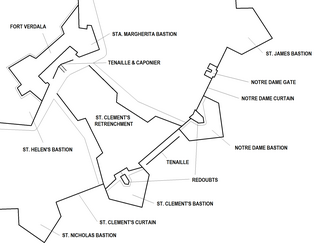External links
| This computer science article is a stub. You can help Wikipedia by expanding it. |
Retrenchment is a technique associated with Formal Methods that was introduced to address some of the perceived limitations of formal, model based refinement, for situations in which refinement might be regarded as desirable in principle, but turned out to be unusable, or nearly unusable, in practice. It was primarily developed at the School of Computer Science, University of Manchester.[ citation needed ]
| This computer science article is a stub. You can help Wikipedia by expanding it. |

The Z notation is a formal specification language used for describing and modelling computing systems. It is targeted at the clear specification of computer programs and computer-based systems in general.
A specification language is a formal language in computer science used during systems analysis, requirements analysis, and systems design to describe a system at a much higher level than a programming language, which is used to produce the executable code for a system.
In mathematics, particularly topology, a cover of a set is a collection of sets whose union includes as a subset. Formally, if is an indexed family of sets , then is a cover of if
In mathematics, the Lebesgue covering dimension or topological dimension of a topological space is one of several different ways of defining the dimension of the space in a topologically invariant way.
A decision method is a formal (axiomatic) system, starting with a decision model, that contains at least one action axiom. An action is of the form "IF <this> is true, THEN do <that>". An action axiom tests a condition (antecedent) and, if the condition has been met, then (consequent) it suggests (mandates) an action: from knowledge to action. A decision model may also be a network of connected decisions, information and knowledge that represents a decision-making approach that can be used repeatedly.
Refinement is a generic term of computer science that encompasses various approaches for producing correct computer programs and simplifying existing programs to enable their formal verification.

Lotus Jazz is an integrated suite of word processor, spreadsheet, database, graphics, and communication software designed for the Macintosh 512K. It was released in 1985 and retailed for US$595.00. The Lotus 1-2-3 spreadsheet was the killer application for the business-oriented IBM PC, and Jazz was an attempt to recreate that success for Macintosh. With the tagline "The software Macintosh was invented for," and promoted on TV at great expense, it was poorly received by reviewers and consumers and became a high-profile flop. In 1988, Lotus was on the verge of releasing an improved version as Modern Jazz, but the project was cancelled.
Cowboy coding is software development where programmers have autonomy over the development process. This includes control of the project's schedule, languages, algorithms, tools, frameworks and coding style.
The B method is a method of software development based on B, a tool-supported formal method based on an abstract machine notation, used in the development of computer software. It was originally developed in the 1980s by Jean-Raymond Abrial in France and the UK. B is related to the Z notation and supports development of programming language code from specifications. B has been used in major safety-critical system applications in Europe. It has robust, commercially available tool support for specification, design, proof and code generation.
A program transformation is any operation that takes a computer program and generates another program. In many cases the transformed program is required to be semantically equivalent to the original, relative to a particular formal semantics and in fewer cases the transformations result in programs that semantically differ from the original in predictable ways.
Professor James Charles Paul Woodcock FREng FBCS CEng CITP is a British computer scientist.
Sequential equilibrium is a refinement of Nash Equilibrium for extensive form games due to David M. Kreps and Robert Wilson. A sequential equilibrium specifies not only a strategy for each of the players but also a belief for each of the players. A belief gives, for each information set of the game belonging to the player, a probability distribution on the nodes in the information set. A profile of strategies and beliefs is called an assessment for the game. Informally speaking, an assessment is a perfect Bayesian equilibrium if its strategies are sensible given its beliefs and its beliefs are confirmed on the outcome path given by its strategies. The definition of sequential equilibrium further requires that there be arbitrarily small perturbations of beliefs and associated strategies with the same property.
Refinement may refer to:
The Young Women is a youth organization of The Church of Jesus Christ of Latter-day Saints. The purpose of the Young Women organization is to help each young woman "be worthy to make and keep sacred covenants and receive the ordinances of the temple."
Retrenchment is an act of cutting down or reduction, particularly of public expenditure.
FDR and subsequently FDR2, FDR3 and FDR4 are refinement checking software tools, designed to check formal models expressed in Communicating sequential processes (CSP). The tools were originally developed by Formal Systems (Europe) Ltd. Bill Roscoe of the Department of Computer Science, University of Oxford devised many of the algorithms used by the tool and Michael Goldsmith was instrumental in the implementation. FDR2 was developed by Department of Computer Science, University of Oxford from where it was freely available for academic and other non-commercial use.

Retrenchment is a technical term in fortification, where it is applied to a secondary work or series of works constructed in rear of existing defences to bar the further progress of the enemy who succeeds in breaching or storming these. An example was in the siege of Port Arthur in 1904.
The 1928 South Indian railway strike was a general strike by the South Indian Railway Workers Union against plans of the South Indian Railway Company to lay off over 3,100 workers in order to reduce the expenditures of the company. The strike lasted from 29 June – 2 August 1928, and severely affected the transportation of people and goods across South India. The Madras government and the South Indian Railway Company responded with a crackdown. Most of the leaders of the strike were arrested and recognition to the union was withdrawn.The Government of Madras recorded it as the "most important event of the year".
1932 Madras and Southern Mahratta Railway Strike was a general strike launched against the retrenchment policies of the Madras and Southern Mahratta Railway Company. The strike lasted from 24 October 1932 to 8 January 1933 and was moderate and non-violent in character as opposed to the 1928 South Indian Railway Strike which was extremely violent.
Mertens stability is a solution concept used to predict the outcome of a non-cooperative game. A tentative definition of stability was proposed by Elon Kohlberg and Jean-François Mertens for games with finite numbers of players and strategies. Later, Mertens proposed a stronger definition that was elaborated further by Srihari Govindan and Mertens. This solution concept is now called Mertens stability, or just stability.